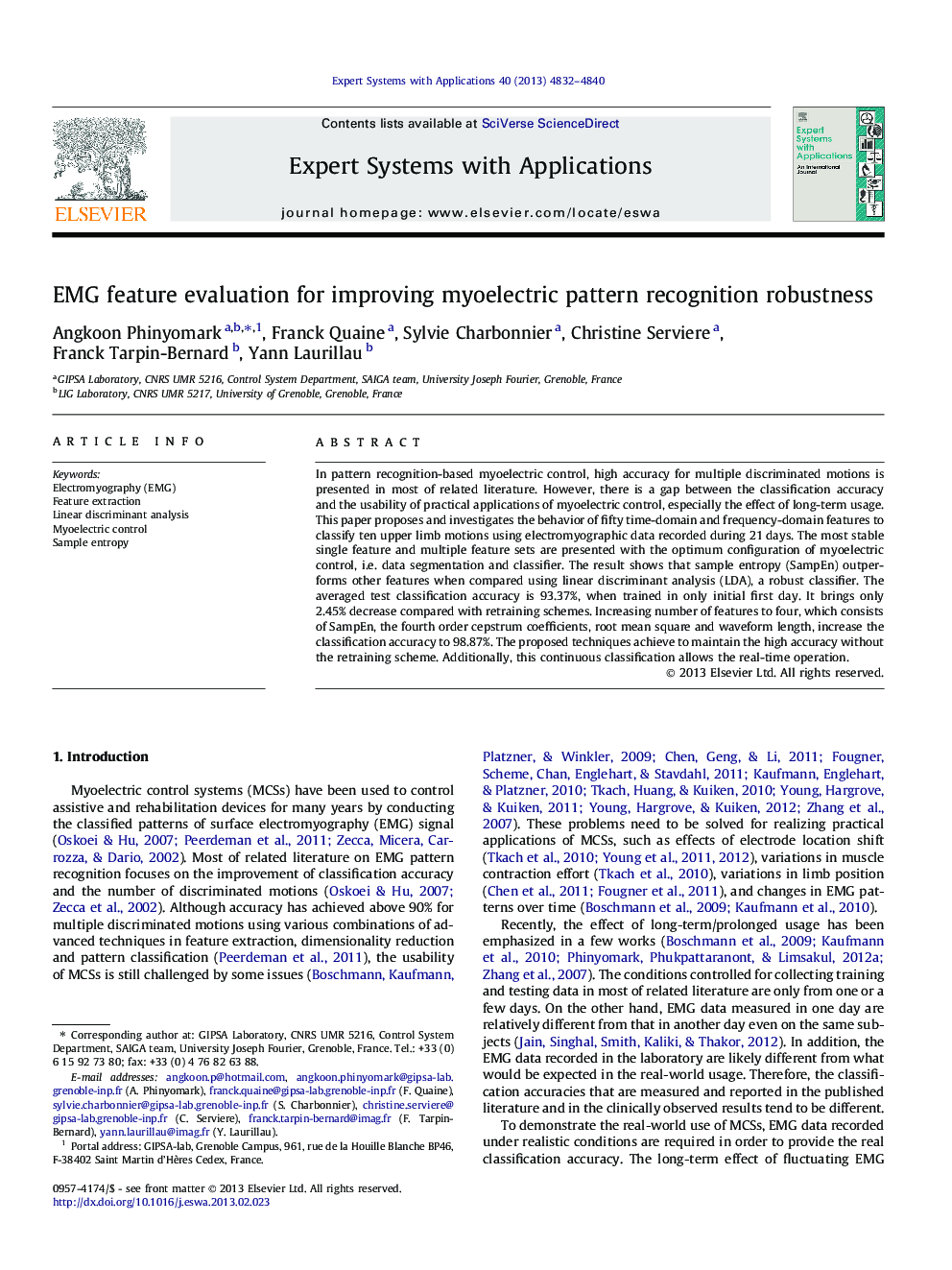| Article ID | Journal | Published Year | Pages | File Type |
|---|---|---|---|---|
| 383702 | Expert Systems with Applications | 2013 | 9 Pages |
In pattern recognition-based myoelectric control, high accuracy for multiple discriminated motions is presented in most of related literature. However, there is a gap between the classification accuracy and the usability of practical applications of myoelectric control, especially the effect of long-term usage. This paper proposes and investigates the behavior of fifty time-domain and frequency-domain features to classify ten upper limb motions using electromyographic data recorded during 21 days. The most stable single feature and multiple feature sets are presented with the optimum configuration of myoelectric control, i.e. data segmentation and classifier. The result shows that sample entropy (SampEn) outperforms other features when compared using linear discriminant analysis (LDA), a robust classifier. The averaged test classification accuracy is 93.37%, when trained in only initial first day. It brings only 2.45% decrease compared with retraining schemes. Increasing number of features to four, which consists of SampEn, the fourth order cepstrum coefficients, root mean square and waveform length, increase the classification accuracy to 98.87%. The proposed techniques achieve to maintain the high accuracy without the retraining scheme. Additionally, this continuous classification allows the real-time operation.
► The medium-term robustness of EMG signals for prosthetic control is investigated. ► The effect of 50 EMG features has been extensively examined. ► A single optimal robust EMG feature is sample entropy. ► Linear discriminant analysis is better than other state-of-the-art classifiers in robustness. ► Average accuracy is 98.87% without retraining classifier for EMG recorded for 21 days.
